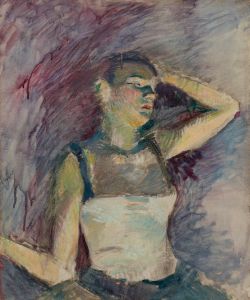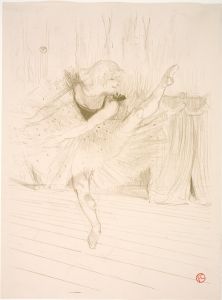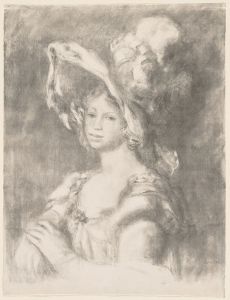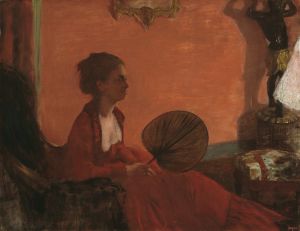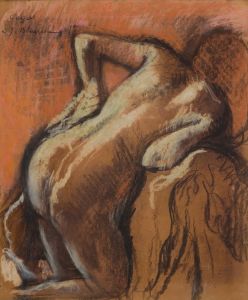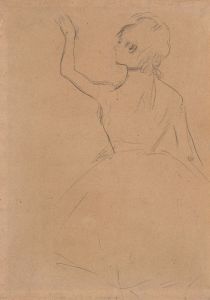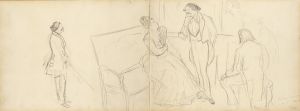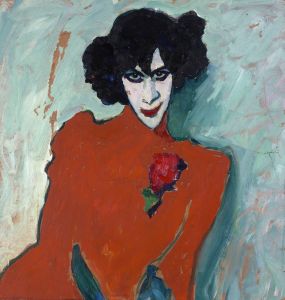
Buste de danseuse au corsage rouge
A hand-painted replica of Edgar Degas’s masterpiece Buste de danseuse au corsage rouge, meticulously crafted by professional artists to capture the true essence of the original. Each piece is created with museum-quality canvas and rare mineral pigments, carefully painted by experienced artists with delicate brushstrokes and rich, layered colors to perfectly recreate the texture of the original artwork. Unlike machine-printed reproductions, this hand-painted version brings the painting to life, infused with the artist’s emotions and skill in every stroke. Whether for personal collection or home decoration, it instantly elevates the artistic atmosphere of any space.
Edgar Degas, a prominent French artist associated with the Impressionist movement, is renowned for his depictions of dancers, capturing their grace and movement with a unique blend of realism and impressionism. One of his notable works in this genre is "Buste de danseuse au corsage rouge" (Bust of a Dancer with a Red Bodice). This artwork exemplifies Degas's fascination with the world of ballet and his innovative approach to composition and color.
"Buste de danseuse au corsage rouge" is a pastel drawing that showcases Degas's mastery in using this medium to convey texture and light. Pastel was a favored medium for Degas, allowing him to achieve a vibrant palette and a sense of immediacy in his work. The use of pastels enabled Degas to layer colors and create a rich, tactile surface that brought his subjects to life.
The artwork features a dancer, a recurring subject in Degas's oeuvre, depicted from the bust up. The dancer is adorned in a red bodice, which stands out against the softer tones of her skin and the background. The choice of a red bodice not only draws the viewer's attention but also highlights Degas's skillful use of color contrast to enhance the visual impact of the piece. The red bodice serves as a focal point, emphasizing the dancer's poise and elegance.
Degas's interest in dancers was not merely aesthetic; it was also an exploration of movement and form. His works often capture dancers in candid, unposed moments, offering a glimpse into the behind-the-scenes world of ballet. This approach reflects Degas's desire to portray the reality of the dancers' lives, including the physical demands and discipline required by their art. In "Buste de danseuse au corsage rouge," the dancer's expression and posture suggest a moment of introspection or preparation, adding a layer of narrative to the composition.
The composition of "Buste de danseuse au corsage rouge" is characterized by its asymmetry and cropping, techniques that Degas frequently employed to create dynamic and engaging images. By focusing on the upper body of the dancer and leaving much of the background undefined, Degas directs the viewer's attention to the subject's expression and attire. This compositional choice reflects the influence of photography and Japanese prints, both of which impacted Degas's artistic style.
Degas's work with dancers, including "Buste de danseuse au corsage rouge," has been celebrated for its ability to capture the ephemeral nature of movement and the subtle nuances of human expression. His innovative use of pastel and his keen observational skills have made these works enduringly popular and influential in the art world.
While Degas is often associated with the Impressionist movement, he maintained a distinct style that set him apart from his contemporaries. His focus on line, form, and composition, as well as his interest in capturing the human figure in motion, contributed to his unique artistic identity. "Buste de danseuse au corsage rouge" exemplifies these qualities, showcasing Degas's ability to blend traditional techniques with modern sensibilities.
Today, Edgar Degas's works, including "Buste de danseuse au corsage rouge," continue to be celebrated for their technical brilliance and emotional depth. They offer viewers a window into the world of 19th-century ballet and the artist's enduring fascination with the beauty and complexity of human movement.






